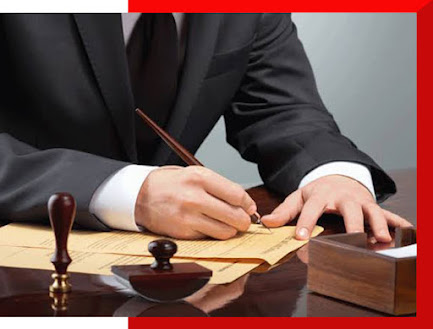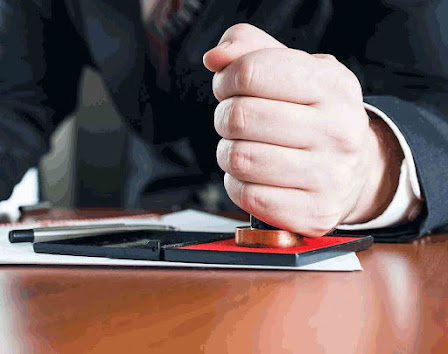What Is Certificate Attestation And How Does It Work?
Certificate Attestation
What is certificate verification?
There are
many reasons why someone may need to get a document attested. For example, many
countries require that certain documents, such as educational certificates, be
verified before they can be accepted. In other cases, a person may need to have
the document attested to be recognized by a particular organization or
institution.
The process of certificate verification usually involves three steps:
First, the document is verified by the issuing authority;
Second, it is certified by a notary public;
And finally, it is commissioned by the competent authorities of the
country where it will be used.
The first step in the process of certificate verification is for the issuing authority to verify the document. This usually involves checking that the document is genuine and that all information contained in it is correct.
Once this is done,
the issuing authority will stamp or sign the document to certify that it is
authentic.
The next
step is for a notary public to attest the document. This involves checking that
the seal or signature of the issuing authority is genuine and that the document
has not been tampered with in any way. Once this is done, the notary public
will seal or sign
Certificate Verification Types
There are three types of certification certification:
1) Personal
2) Professional
3) Academic
Personal
certificate verification is done for documents that will be used for personal
purposes, such as birth certificates or marriage certificates. Business
certificate verification is done for documents that will be used for business
purposes, such as a commercial invoice or bill of lading. Educational
certificate verification is done for documents that will be used for
educational purposes, such as transcripts or diplomas.
Benefits of
Certificate Attestation
There are
many benefits of certificate attestation, but the three main benefits are:
1. It ensures the authenticity of your documents:
When you get your documents
attested, it means that a government official has verified the authenticity of
your documents. This is important if you are going to use your documents for
things like getting a visa or applying for a job.
2. It shows you're serious about your career:
If you're looking to advance your career, or
even just get started in one, having certified documents can show potential
employers that you're You are serious about your chosen field and you have the
necessary qualifications.
3. It can save you time and money:
In some cases, getting your documents attested can
actually save you time and money. For example, if you're applying for a job
that requires certain qualifications, verifying those qualifications may help
you avoid taking additional courses or exams to meet the requirements.
Certificate Verification Process
The process
of certificate attestation is the act of verifying the authenticity of a
document. This is usually done by a government body or notary public. The
process of attestation can vary depending on the country in which the document
was issued, but it usually involves verifying the document's seals and
signatures.
DOCUMENTS
REQUIRED FOR CERTIFICATE VALIDATION
Several
documents are required for certificate verification, but the most common are:
- A copy of
the certificate
- A copy of
the applicant's passport
-Copy of the
sponsor's passport
-A verification form
- Power of
Attorney (if applicable)
The first
step in getting your certificate verified is to collect all the required
documents. The most common documents required are a copy of the certificate, a
copy of the applicant's passport, a copy of the sponsor's passport, and a
verification form. You may also need to provide a power of attorney if you are
not applying for the certificate yourself.
Once you
have all the required documents, you need to submit them to the concerned
authorities for approval. In most cases, this will be done by your local
embassy or consulate. They will review your documents and determine whether
they can issue a certification for your certificate. If everything is in order,
they will stamp or seal your documents and return them to you.
Now that you
have your documents back, you will need to take them to the ministry responsible
for certifying documents in your country. This is usually the Ministry of
Foreign Affairs or similar. They will again review your papers and decide
whether to issue the verification or not. If they do, they will provide their
stamp or seals on your document.
With both the stamps, now your certificate is fully authenticated and ready
Cost of certificate attestation
The cost of
certificate verification will vary depending on the type of certificate and the
country in which it was issued. For example, a birth certificate from the
United States would need to be attested by the US State Department, while a
birth certificate from India would need to be attested by the Indian Ministry
of External Affairs.
Generally
speaking, the certification process for certificates can be divided into three
stages: document verification, legalization, and apostille. The cost of each
step will vary depending on the country in which the document originated.
Document
verification is usually carried out by the document issuing authority (for
example, a government office or registrar). Fees for this service are
determined by each individual country and can range from $20 to $200+.
Legalization
is the process of getting your documents recognized by the embassy or consulate
of the destination country. This step is usually required for documents
originating from countries that are not part of the Hague Convention Apostille.
The fees for this service also vary by country, but are usually around $50-$200
per document.
Apostille is
an international certification given under the Hague Convention Apostille for
documents going to countries that are members of this convention. An Apostille
can usually be obtained from the Secretary of State in your home state in the
United States for approximately $25-$35 per document.
Alternatives to Certificate Attestation
There are a
few alternatives to certificate attestation that can be used in certain
situations. These include:
1.
Notarization: This is a process where a notary public attests to the identity
of the person signing the document and witnesses the signature. It can be used
in place of certificate verification in some cases.
2.
Apostille: This is a process that is commonly used for documents that need to
be sent to another country. Apostille is an official certification from a
government body that confirms the authenticity of a document.
3.
Authentication: It is a process where a government body or other organization
verifies the authenticity of a document. It can be used in place of certificate
verification in some cases.
Conclusion
Certificateverification is an important process when it comes to proving the authenticity
of a document. This ensures that documents are properly authenticated, and that
they can be used in international contexts. With this information, you should
now have a better understanding of what certificate authentication is and how
it works. If you need help with the process, make sure you contact a
professional who can help you get your documents properly attested.


.jpg)

Comments
Post a Comment